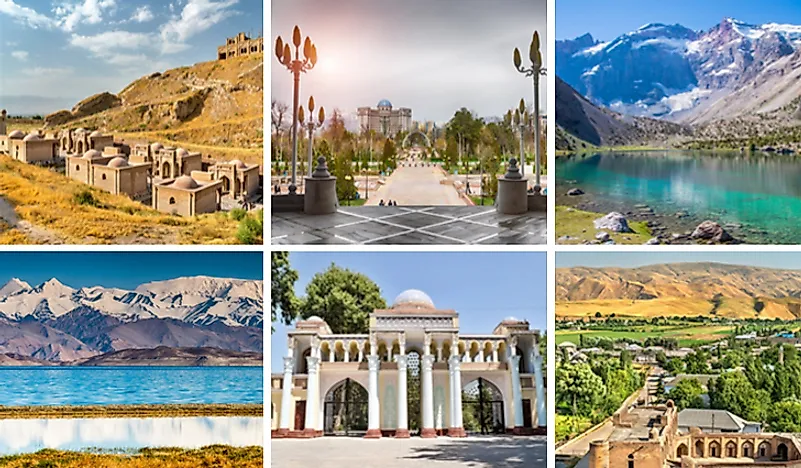10 Interesting Facts About Tajikistan

Located in Central Asia, Tajikistan is a highly mountainous and landlocked nation with cultural and natural treasures waiting to be explored. The country covers an area of 143,100 square km and hosts a population of around 8.7 million people. Here is a list of some of the most interesting and less known facts related to the nation:
Tajikistan Is A Highly Mountainous Nation
Over 90% of the territory of Tajikistan is mountainous. About 50% of the country has an elevation of more than 3000 m above sea level. Some of the world’s highest mountains are located here. Most of the nation’s highest peaks are part of the Pamir and the Alay ranges. The 7,495 m tall Ismoil Somoni Peak is the tallest mountain in Tajikistan.
The World’s Second Tallest Human-made Dam Is Located In Tajikistan
The Nurek Dam is located on the Vakhsh River in Tajikistan. The dam was the world’s tallest human-made dam prior to the title being bagged by China’s Jinping-I Dam in 2013. The Nurek Dam is used primarily for hydroelectric power generation. Its construction was started in 1961 and the first generator was installed in 1972.
Tajikistan Hosts The World’s Longest Glacier Outside The Polar Regions
A massive glacier named the Fedchenko Glacier is located in the Yazgulem Range of the Pamir Mountains in the country’s Gorno-Badakhshan province. This glacier covers an area of 700 square km and extends for a distance of about 77 km. The glacier is 3,300 ft deep at its thickest point. The long and narrow Fedchenko Glacier is the longest glacier in the world that is located outside the two polar regions.
More Than 900 Rivers Flow In Tajikistan
The country has a dense network of rivers. Over 900 rivers in the country are longer than 10 km. Some of Central Asia’s longest rivers flow through this country. The Syr Darya and the Amu Darya are two of Tajikistan’s biggest rivers.
Tajikistan Is Highly Susceptible To Earthquakes
The country is located in a seismically active zone. Earthquakes occur frequently. The 1907 Qaratog earthquake and the 1949 Khait earthquake were two of the deadliest earthquakes in Tajikistan. Thousands of lives were lost during these two natural disaster events.
The Capital City Of Tajikistan Is Named After A Day In The Week
Dushanbe is the capital of Tajikistan. The name Dushanbe means Monday in the Tajik language. The name was chosen since Dushanbe grew to a city from a village that hosted a very popular market every week on a Monday.
The Country Has A Spectacular Lake Named After Alexander the Great
Lake Iskanderkul is located at an elevation of 2,195 m in the mountains of the Sughd Province of the country. The lake is well known for its beauty. It has a triangular shape and covers an area of 3.4 square km. The lake derives its name from Iskander, the Persian name of Alexander the Great. The lake and its surroundings provide a variety of habitats for the local wildlife. The birdlife here is very rich.
The Wakhan Corridor Separates Pakistan From Tajikistan
Only a narrow strip of land separates the two countries of Tajikistan and Pakistan. This strip is called the Wakhan Corridor and it is a part of Afghanistan. The corridor is wedged between the lofty mountains of the Karakoram Range to the south and those of the Pamir to the north. The strip of land is only 13 to 65 km wide but has a length of 350 km.
The Legend Of The Yeti Is Also Prevalent In Tajikistan
Although most of us would relate the legend of the yeti to the Himalayan mountains, reports of the presence of the snow people or yeti have also surfaced in Tajikistan’s Pamir mountain region.
Tajikistan Is A Growing Tourist Destination
Tourism in Tajikistan has been growing fast in the past few decades. The mountainous landscape and less explored cultures of the nation attract tourists from far and wide. Adventurers and mountaineers also arrive in this country since it offers many adventure activities like mountain climbing, skiing, snowboarding, etc.











